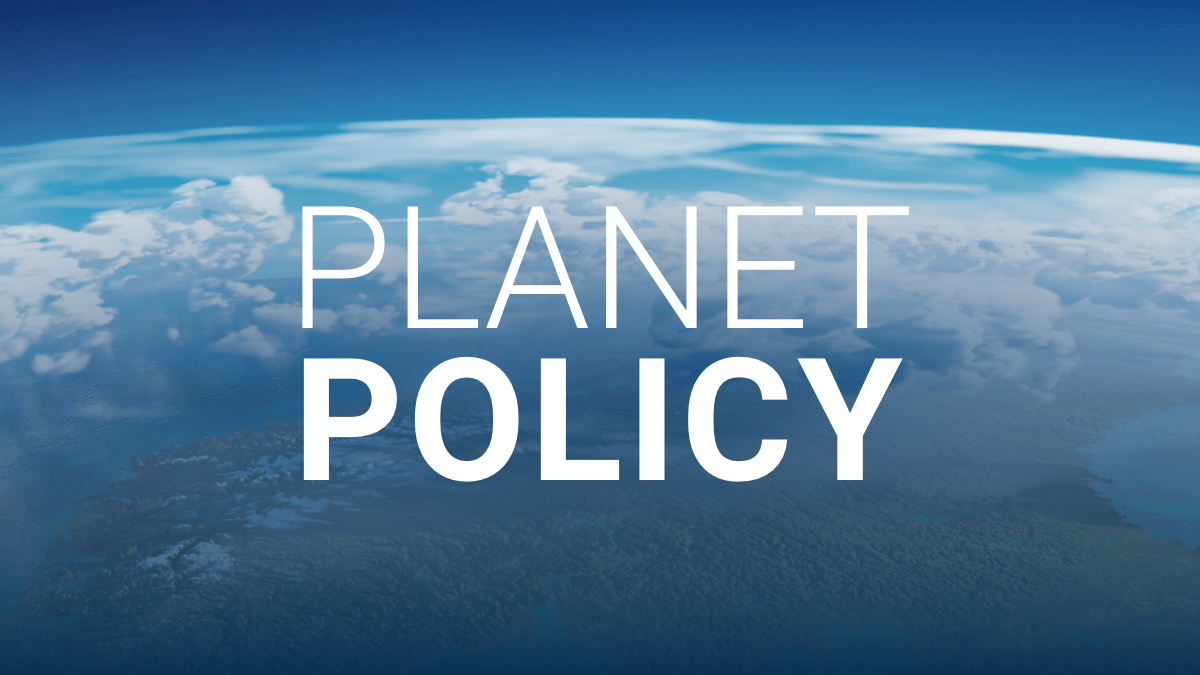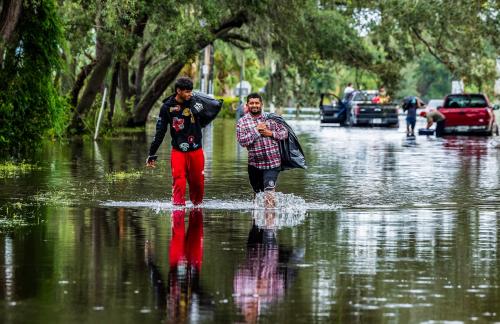Has climate change altered the probability of extreme weather events like the 2013-14 California drought?
This question – which is relevant to policymakers seeking to manage the risks of impacts on public health, energy, food, water, and infrastructure – is central to the report “Explaining Extreme Events of 2013 from a Climate Perspective,” which was published September 29 as a special section of the Bulletin of the American Meteorological Society (BAMS).
Our team of scientists and statisticians from Stanford University used new analyses of historical data and climate models to study various components of the ongoing California drought. Based on these analyses, we concluded that:
- The 12-month period ending in January 2014 was the driest 12-month period in the 119 years of precipitation observations in California.
- The proximal cause of the extremely dry conditions observed in California during 2013 was a region of persistently high atmospheric pressure (nicknamed the “Ridiculously Resilient Ridge”), which deflected the winter storm track away from the state.
- Over the past three decades from which we have satellite observations, a strong relationship exists between persistently high atmospheric pressure over the northeastern Pacific and dry conditions in California.
- Human emissions of greenhouse gases have very likely increased the probability of persistently high atmospheric pressure over the northeastern Pacific by at least a factor of three.
The emerging science of attributing extreme weather events to human-caused climate change is challenging. To be clear, global warming has been robustly observed and scientifically attributed to human activities. In addition, a number of different kinds of extreme climate events have been observed to be increasing in frequency and/or intensity in different parts of the world. The current challenge in “attribution science” is understanding whether the global warming that has already occurred has influenced the probability, severity, and/or character of “unprecedented” individual events that fall outside of our historically observed experience.
A key component of objectively testing the influence of global warming on extreme events is the rigorous statistical analysis of climate observations. Another key component is the rigorous analysis of global climate models, which are one of the primary tools used to investigate physical processes in Earth’s atmosphere and ocean. In our study, we used climate observations in combination with data from a suite of climate models developed by research institutions in various countries around the world. These climate models were used to test differences between two hypothetical climates: one in which humans never emitted greenhouse gases into the atmosphere, and another that closely parallels the real world, in which natural variations occurred in addition to the human emission of greenhouse gases.
There is strong agreement in the scientific community that the most immediate cause of the California drought is the “Ridiculously Resilient Ridge.” Through our analysis of climate models and observations, we have found that extremely high atmospheric high pressure over the northeastern Pacific region—which our work shows is historically linked to low precipitation in California—is much more likely to occur today than prior to the human emission of greenhouse gases that began during the Industrial Revolution in the 1800s.
Our paper is one of several recent peer-reviewed studies that examine the California drought in the context of climate change. These studies analyze different atmospheric and surface variables, and focus on different geographic patterns and time periods of interest. Each sheds light on what has undoubtedly been an extreme meteorological event with widespread impacts in California and beyond. Ongoing research at Stanford and elsewhere seeks to further refine our understanding of possible linkages among global warming, persistent atmospheric patterns, statewide warming, and California drought.
One effect of global warming that is subject to very little uncertainty is the reality of increasing temperatures. Thus far, 2014 has been California’s warmest year on record statewide. This record warmest year occurs at the peak of a long-term warming over recent decades. Since high temperatures can substantially amplify precipitation deficits by increasing evaporation and accelerating snowmelt, it is highly plausible that this statewide warming represents an additional human fingerprint upon the increasing risk of extreme dryness in California—a topic that we continue to investigate in ongoing research.
It is clear that the current drought event in California is an extreme event, and that it is resulting from a complex confluence of interacting climatic conditions. And it is also clear, given the dramatic and far-reaching impacts, that effective management of climate-related risks requires rigorous, objective assessment of the probability of this kind of extreme event in the current climate. As scientists, we devote much of our time and attention to characterizing and quantifying uncertainty, and a complex event such as this gives us much to analyze and debate. However, while real work remains in order to fully understand the causes of this and other previously unprecedented events, our paper published this week suggests that it is very likely that at least some of the conditions associated with the California drought have indeed become more probable due to global warming.
For further background and results, we encourage you to read the Research Brief describing our paper, and to view a short video in which we explain the “Ridiculously Resilient Ridge”.
Noah Diffenbaugh is an Associate Professor in the School of Earth Sciences and Senior Fellow at the Stanford Woods Institute for the Environment. Diffenbaugh served as lead author for Chapter 26 (“North America Regional Aspects”) and regional climate summary figures of the March 2014 report issued by Working Group II of the Intergovernmental Panel on Climate Change (IPCC). Daniel Swain is a PhD candidate in the Department of Environmental Earth System Science at Stanford University and a member of the Climate and Earth System Dynamics Group.
The Brookings Institution is committed to quality, independence, and impact.
We are supported by a diverse array of funders. In line with our values and policies, each Brookings publication represents the sole views of its author(s).




Commentary
Climate Change and the California Drought
October 6, 2014